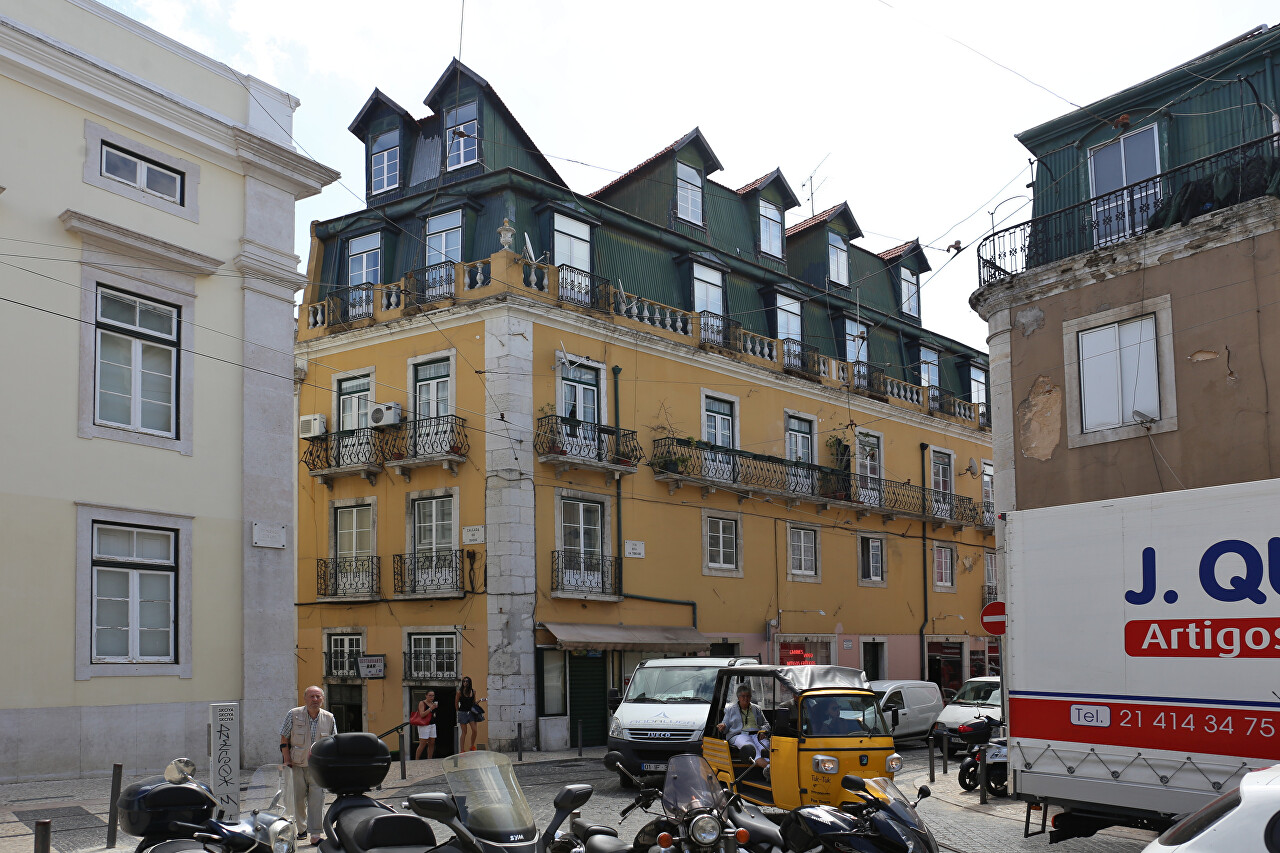Largo Trindade Coelho
I emerged from the maze of "wine" narrow streets of the Bairro Alto quarter at the top of Rua da Misericordia, a square that straddles the border of Misericordia and Chiado. Since 1913, the square has been named after the famous poet and journalist José Francisco Trindade Coelho (1861-1908).
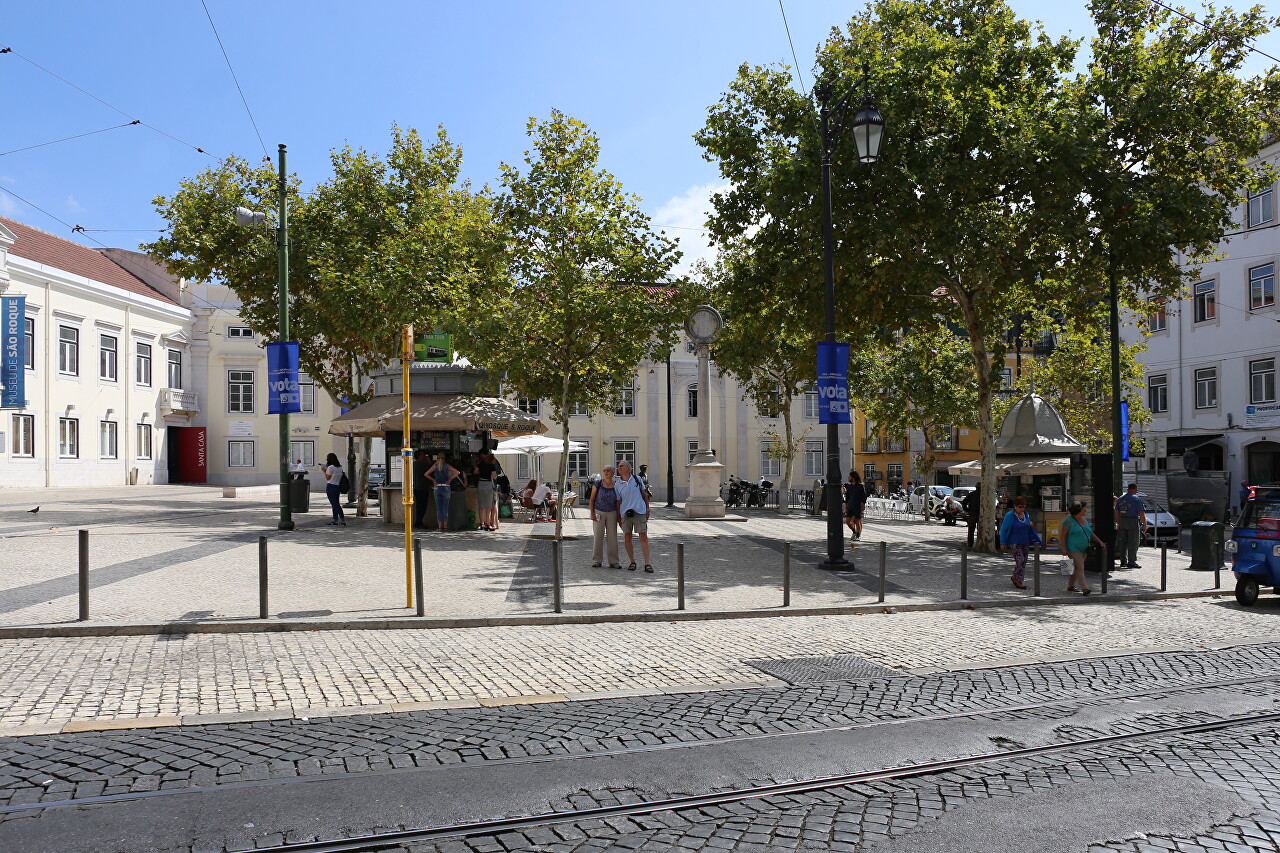
Here is the Jesuit Church of St. Roch, which I met during my first visit to Lisbon. By the way, the site of the current square used to be the cemetery of St. Roch.
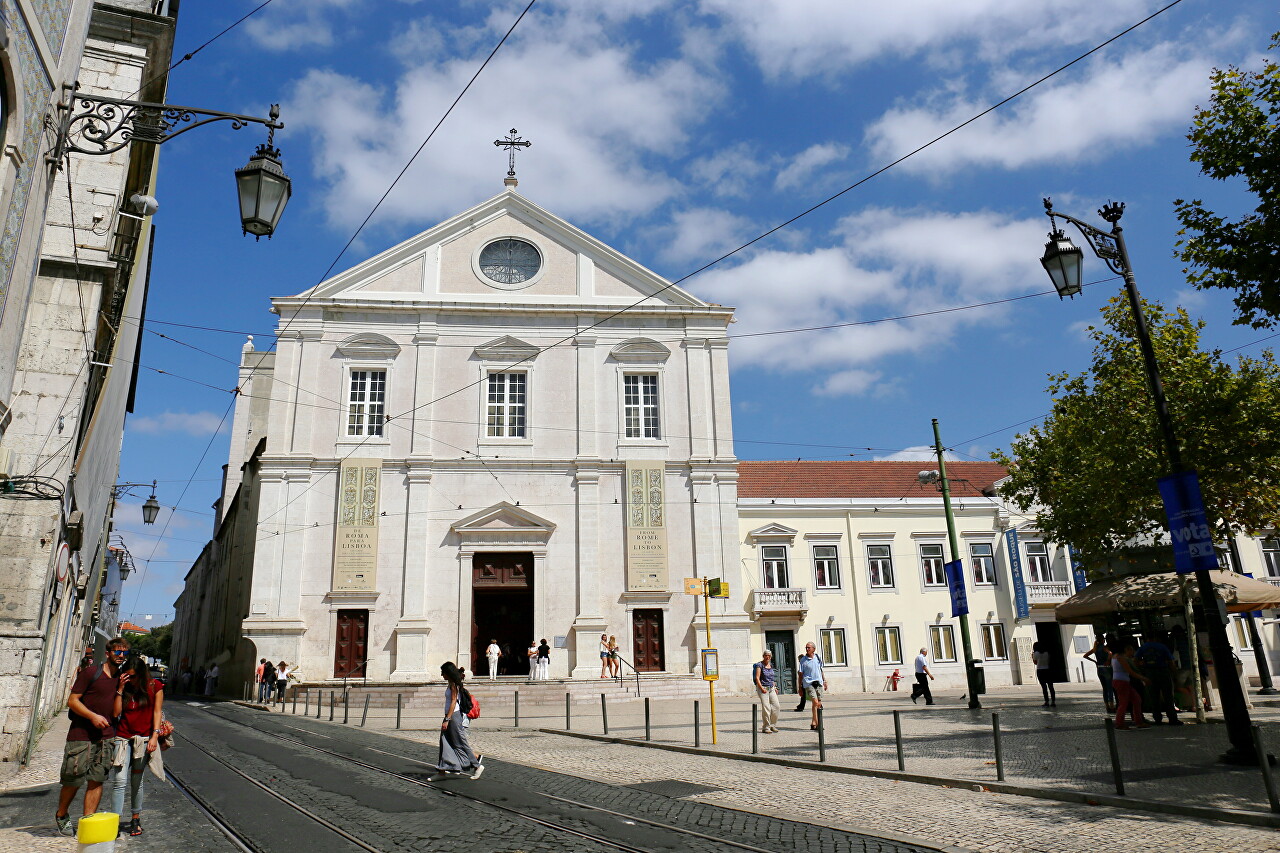
To the right of the church is the Museum of Religious Art (Museu de São Roque), where you can see paintings and sculptures from the 16th to the 20th century. The museum is open daily from 10 to 18 hours, ticket price 2.50 euros.

The eastern border of the square is formed by the extensive social complex Santa Casa da Misericordia de Lisboa (Holy House of Mercy). This charitable organization was founded in 1498 by Queen Eleanor, who after the death of her husband devoted herself to helping the sick, the poor, orphans and artists. The Board of Trustees consisted of 30 nobles and 30 prominent citizens. The society maintained hospitals, distributed clothing and food to the poor, gave shelter to pilgrims, and also carried out humanitarian missions to support and release prisoners, and guided those who broke the law to the true path.

The Society is a private non-profit organization, but it is controlled by the state. One of the sources of funding is the national lottery. Currently, there are more than 350 Houses of Mercy in Potrugali.
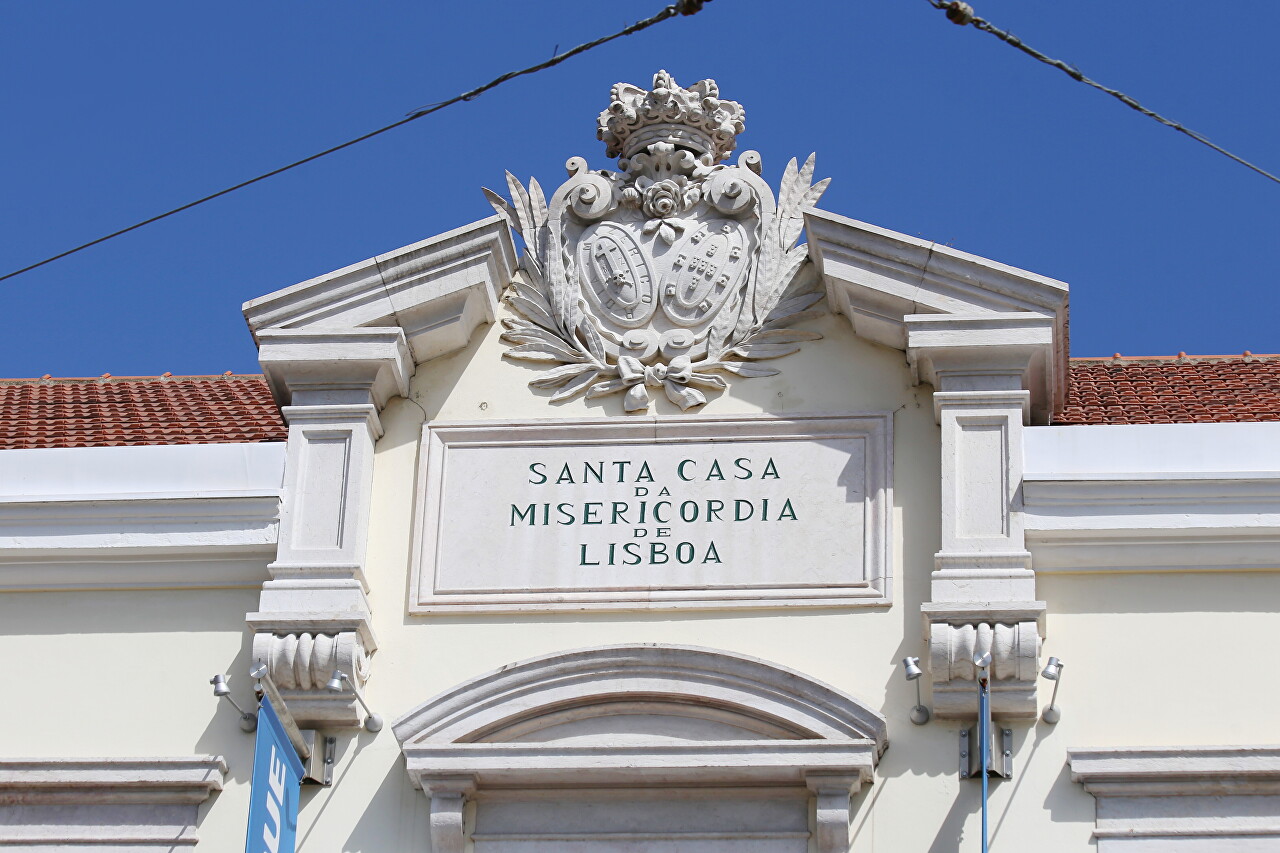
In the center of the square is the obelisk Consórcio de Dom Luís, erected in 1862 on the occasion of the wedding of King Louis I (Dom Luís I) with the Italian Princess Maria Pia of Savoy (Donna Maria Pia de Savoy). Evil tongues claim that the obelisk is shaped like a lollipop, as the couple experienced the same addiction to this confectionery and allegedly this was the reason for the choice of the Portuguese monarch. In fact, the story is more complicated: In December 1861, Luis's half-brother, King Pedro V, died without issue, and soon two younger brothers also went to the other world. Thus, all of a sudden, the responsibilities of the state fell on Luis's shoulders. I must say that he never showed any interest in politics, his hobbies were poetry and literature. In particular, he performed the first translation of Shakespeare's Hamlet in Portugal.
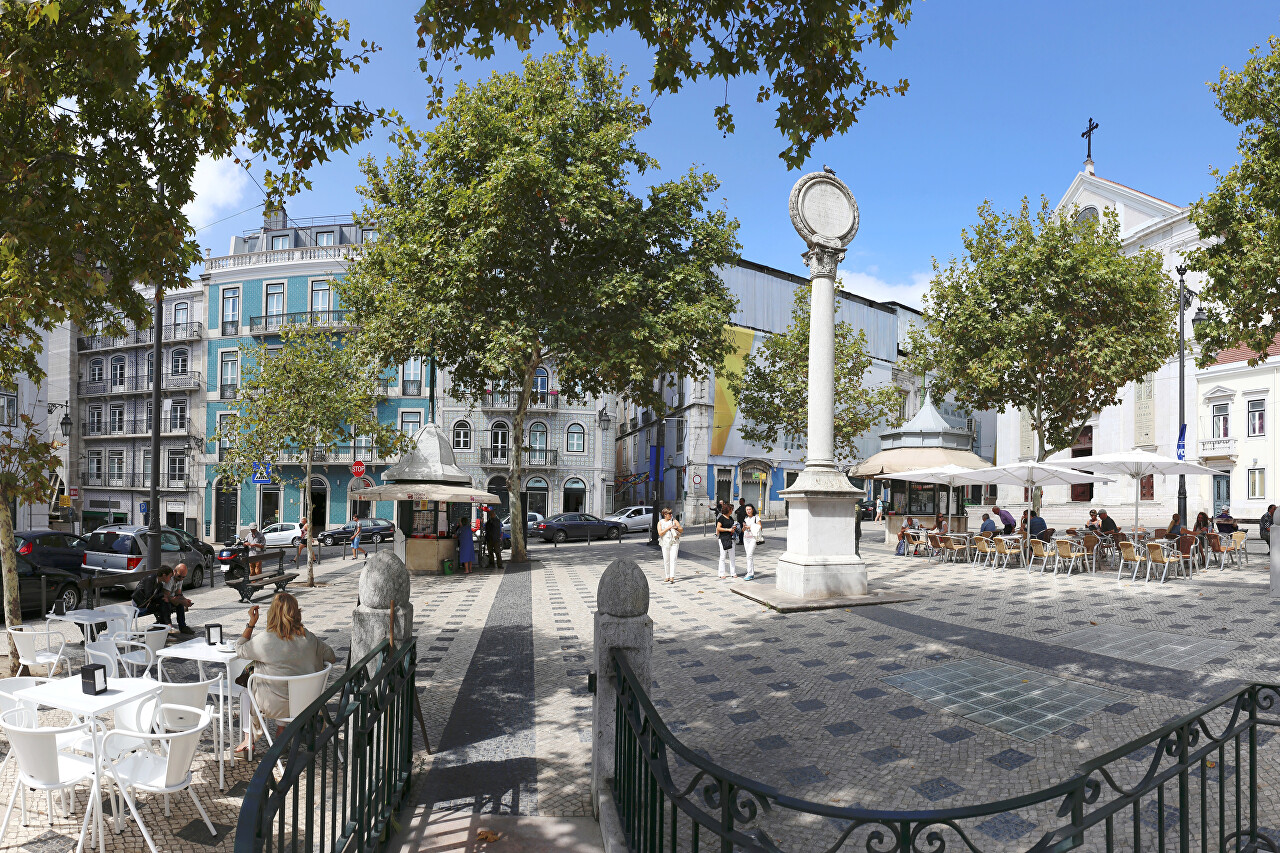
The new king was not married and this matter had to be resolved as soon as possible. Luis was the only member of the Braganza dynasty left, and an heir was urgently needed. Without too much trouble, the king sent letters to half a dozen royal houses in Europe with a proposal of marriage to the princesses there. Louis eventually married the daughter of King Victor Emmanuel II, the youngest of the princesses, when she was only 14 years old. The ship with the bride arrived in Lisbon on October 5, and the wedding took place the next day. The young princess was delighted with her husband and the marriage promised to be happy, a year later they had a son. However, the constant infidelities of the loving Louis, as well as the unsuccessful birth of her third son, plunged the princess into a deep depression, however, she remained a faithful spouse and caring mother.
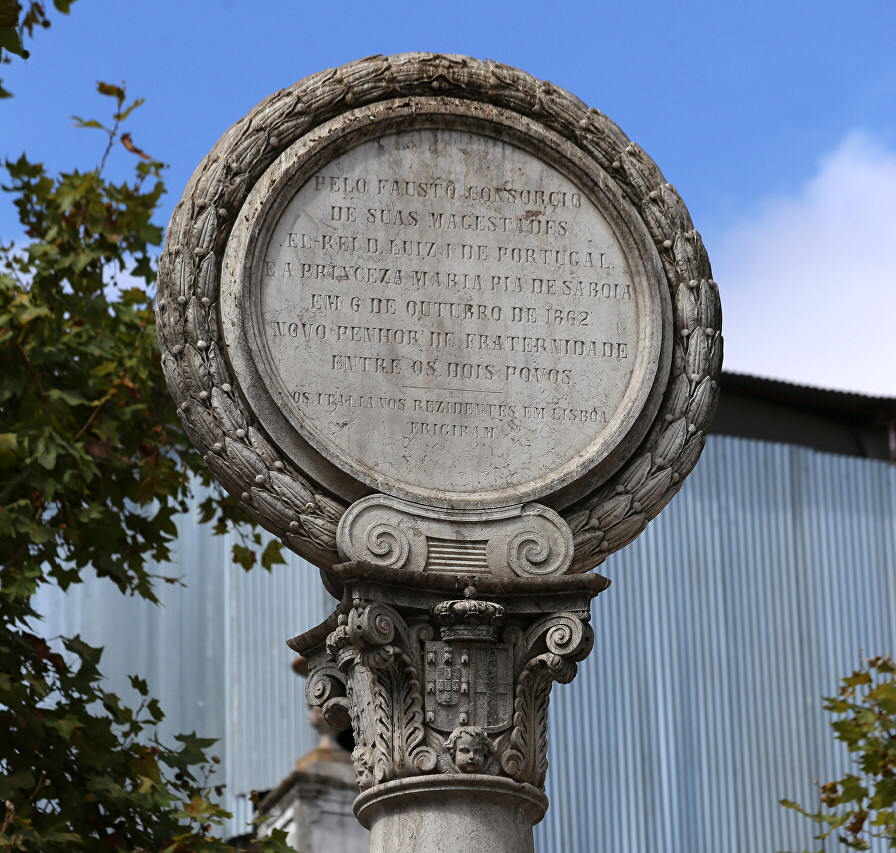
Next to the obelisk is a bronze sculpture depicting a street vendor of lottery tickets (O Cauteleiro). In Portugal, lotteries are very popular, and the National Charity Lottery has been around for more than 200 years. The sculpture, made by the artist Fernanda de Assis, was installed in 1987, and since then the inhabitants of Lisbon have sometimes called the square Largo do Cauteleiro.
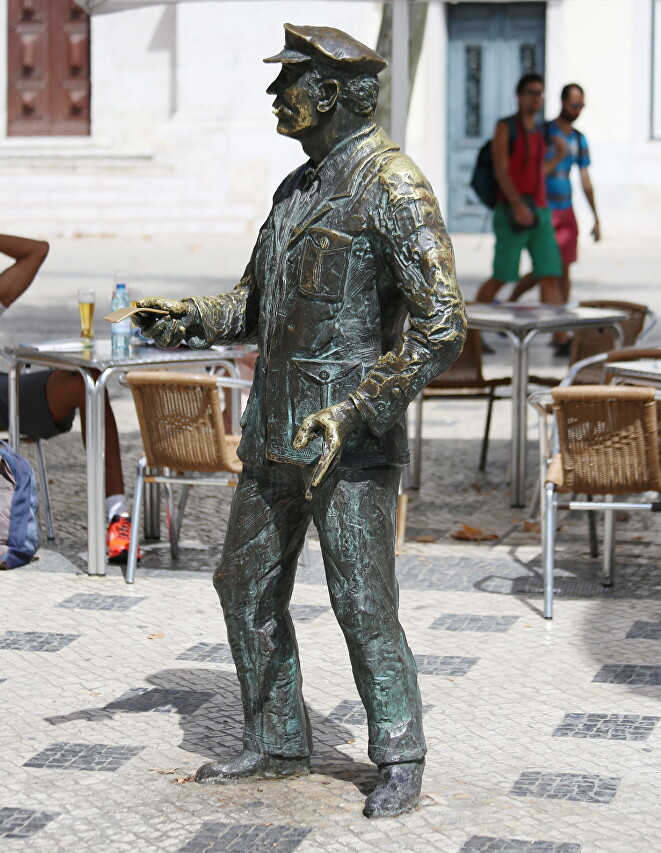
In the south-eastern corner of the square there is an interesting house with a two-story attic. On the square there are cafes and kiosks with drinks, an underground public toilet.
